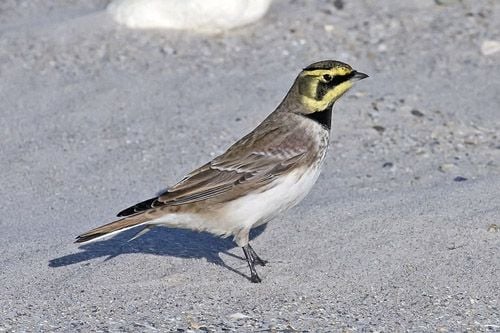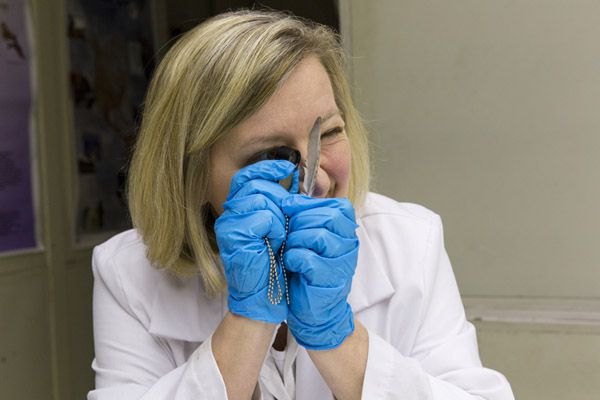What Bird Species Is Most Likely to Hit an Airplane? (It’s Not the Canada Goose)
Birdstrikes cause millions of dollars worth of damage each year. Forensic ornithologist Carla Dove is searching for a remedy.
/https://tf-cmsv2-smithsonianmag-media.s3.amazonaws.com/filer/96/70/967061fc-54bc-4638-8b0e-7979de111a4c/worktable_med.jpg)
If there are no feather remains at all, Dove’s team runs a DNA analysis, but with 10,000 species of birds, a match cannot always be made to the lab’s library of known sequences. What’s the most common species involved in birdstrikes? “It’s not what you might think,” said Dove in the webcast. “You might think of a big bird like a goose or gull or hawk. But the most common bird involved in birdstrikes is a small bird called a horned lark. It loves the open airfield, likes to look around where it’s open. And there are no predators around, so it feels safe there. Most birdstrikes occur on takeoff and landing. So if we can do something to that immediate environment, we can really do a lot to prevent these birdstrikes from happening.”

When a bird crashes into your aircraft causing significant damage, what do you do? You wipe off the remains (known in the trade as “snarge” or “bird ick”), and mail them to Dr. Carla Dove of the Smithsonian’s Natural History Museum for identification.
Identifying the species of bird helps airfield managers and pilots understand what birds are in the area, and how to keep them from causing problems on the airfield, Dove explained in a recent episode of Smithsonian Science How?
Forensic ornithologists identify bird species from small fragments such as feathers, beaks, talons—or snarge. The lab gets its cases through the mail—more than 8,000 each year. If the evidence is an entire feather, Dove and her staff of three start by comparing it to one of the museum’s 620,000 specimens. A partial feather may require the use of an electron microscope. “In that case,” said Dove in the webcast, “we would look at the tiny details in the downy barbules, and that might tell us the group of birds the feather came from. For example, if we looked at a Mallard duck, we might see nice triangular-shaped nodes at the tips of the barbules.”
What can airports do to reduce the risk of birdstrikes? “Different birds congregate at different airports,” said Dove. “It really depends on the species you have on your airfield. If it’s a bird that likes water, we may fill in the pond or the marsh; maybe cut the grass; maybe use propane cannons to scare the birds, or use border collies or falcons. There are all kinds of tools we can use to keep the plane safe and keep the bird safe.”
Read more about the work of the Smithsonian's forensic ornithologists here.
